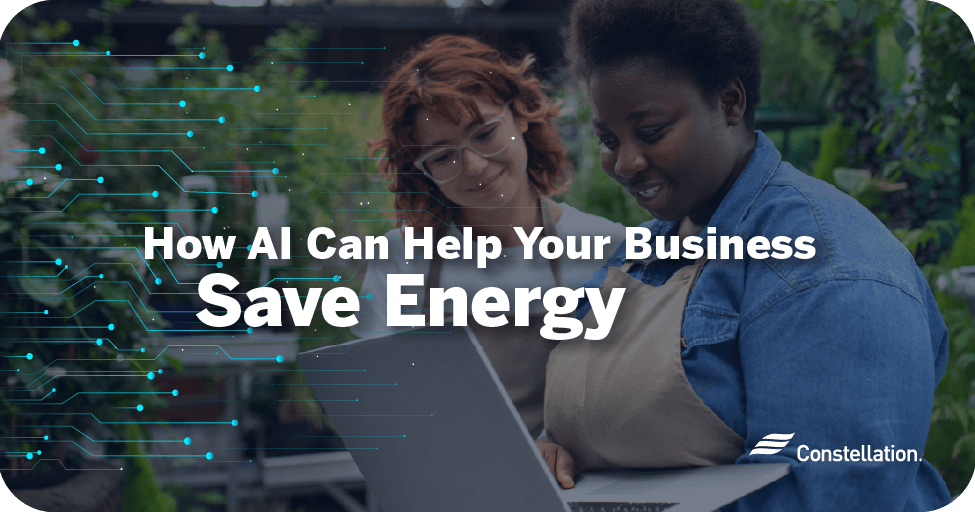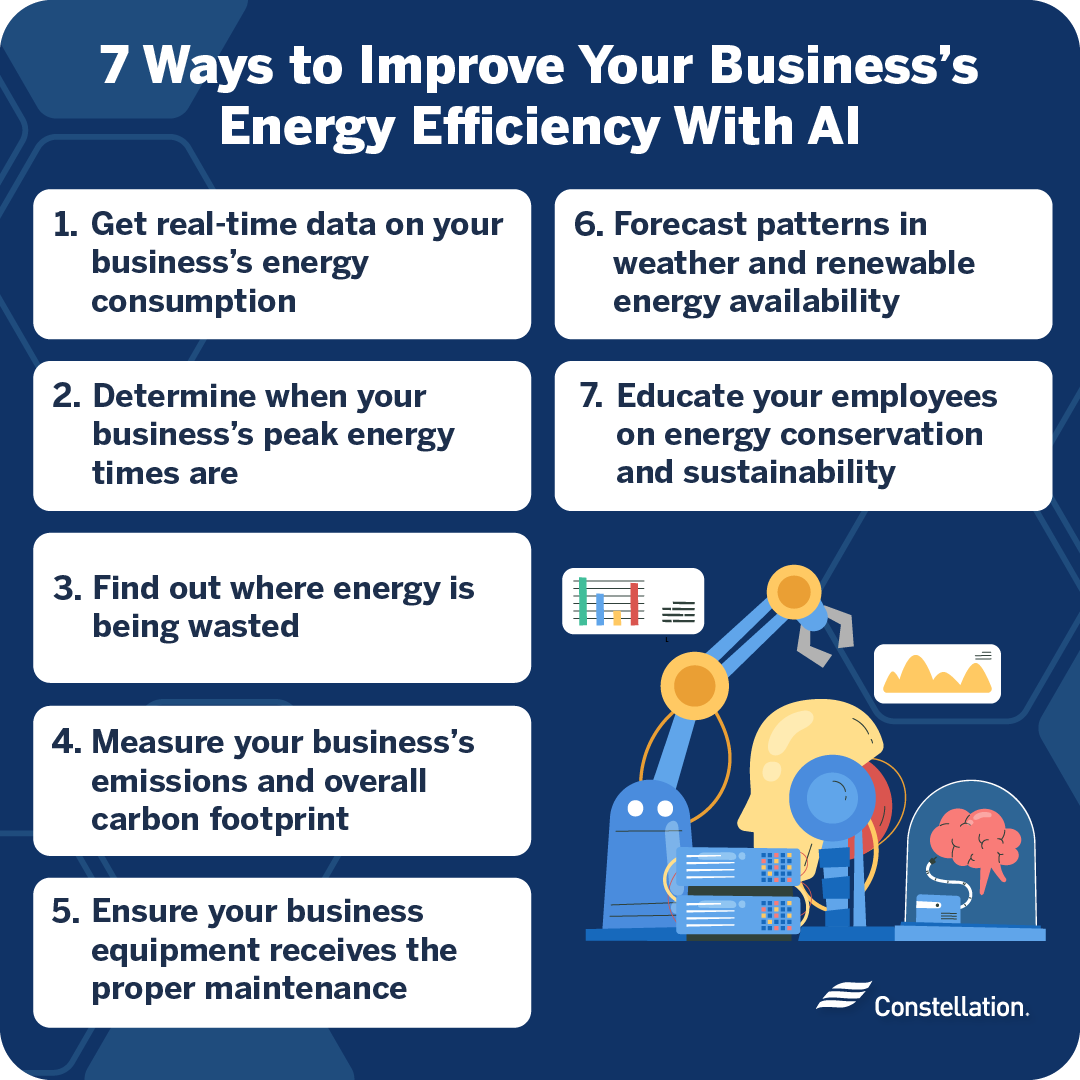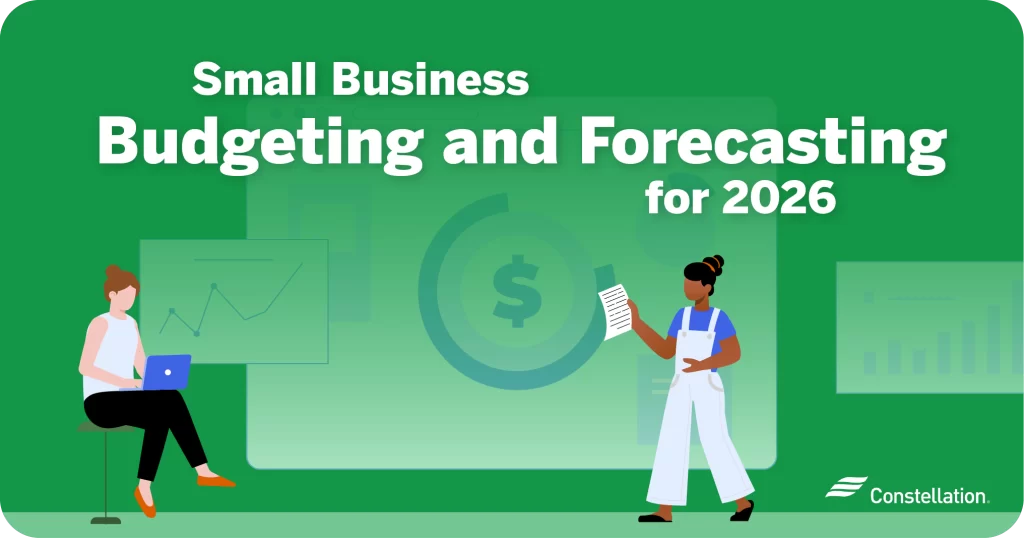
- Category:
Small Business Energy Savings -
Last updated:
March 8, 2024
How AI Can Help Your Business Save Energy
AI technology is transforming how businesses operate. By aligning the use of artificial intelligence and energy efficiency goals, you can reduce operating cost. Smart devices can collect vast amounts of data for analysis and use in solutions that optimize energy consumption.
Jump to section:
- What is artificial intelligence?
- Examples of AI technologies
- 7 ways to improve your business’s energy efficiency with AI
- Additional uses for AI in your small business
- The future of artificial intelligence and energy conservation
What is artificial intelligence?
Artificial intelligence is the use of machines and software to gather data, observe patterns and outcomes, analyze and interpret it, and then make judgements and decisions.
Business leaders typically deal with complex problems and must make decisions in ambiguous, fast-changing, and complicated situations. The strength of AI is its ability to sort through data and scenarios and then to offer solutions and assess them much faster than a human could do.
That is why the expansion of ways to use AI is one of the top small business trends for 2024.
Examples of AI technologies
AI is actually an umbrella term for a growing number of types of smart technologies and approaches to artificial intelligence.
- Machine learning
- Natural language processing
- Virtual agents
- Predictive analytics
- Machine vision
- Voice recognition
- Decision-making systems
- Data analytics
- Text analytics
- Image processing
- Smart assistants
- Think
7 ways to improve your business’s energy efficiency with AI

While artificial intelligence is highly advanced technology, you do not have to be an expert to improve energy efficiency using AI. In fact, it is one of the easier and more impactful ways to use smart small business technology. Here is how to use AI to achieve many of your small business sustainability goals today.
1. Get real-time data on your business’s energy consumption
One way businesses are saving energy with AI is by putting it to work gathering data on energy consumption. Through sensors, meters and other energy monitoring instruments, smart energy systems can collect information in real time. Measuring is the important first step in discovering ways to improve your building’s energy efficiency and optimize your operations. Once you make improvements and change habits, small business monitoring will help you fine tune and stay ahead when it comes to ongoing efficiency. With intelligent lighting systems, for example, AI can make use of sensors to adjust lighting levels based on the availability of natural light and activity in the area.
2. Determine when your business’s peak energy times are
Another way businesses are using AI to reduce energy consumption is by tracking when your business uses the most energy. With details on energy usage patterns, AI systems give you the information you need to cut waste or change operations to eliminate peaks and potentially move some tasks to parts of the day when energy isn’t as expensive.
Your business may wish to volunteer for demand response programs offered by energy suppliers or utilities to help them manage and even out demand to improve the stability of the grid.
3. Find out where energy is being wasted
Improve energy efficiency with AI by using the technology to detect where you are using the most energy and where you can cut waste. It will tell you what devices are most efficient and which ones it pays to replace. Using AI is like doing a small business energy audit on an ongoing basis and in real time.
AI is particularly good at looking across systems to see how they interact with one another. You might be using devices that create excess heat at the height of the day in summer, causing your air conditioning system to work that much harder. You might consider scheduling the devices that use the most energy in your business during off-peak evening hours when energy is less expensive and when other systems are not impacted as much.
4. Measure your business’s emissions and overall carbon footprint
Accurately measuring the carbon footprint of your business is necessary to establish a benchmark for future improvements. Measuring your progress and reporting to regulators, customers, and partners is just as important.
Some customers are demanding that suppliers provide details on vendor carbon emissions so that they can account for their upstream carbon footprint. With a thorough analysis of your operations, you will likely find many examples of environmental sustainability that you can achieve with a few adjustments.
5. Ensure your business equipment receives the proper maintenance
Keeping up with the preventive maintenance on all of the systems and equipment in your business isn’t easy. Certain devices will need maintenance according to a schedule, while others need service after so many hours of operation. Still others require that you know the condition of equipment and provide service as needed.
AI can use history, usage patterns, and current data to predict problems before they happen so that you can be proactive when it comes to maintenance. AI can also help you schedule, prioritize, and track work orders. When your equipment is in good condition, it is more energy efficient.
6. Forecast patterns in weather and renewable energy availability
Being able to predict the weather is valuable to your business in several ways. If your business is weather driven, like a snow plowing business, or weather impacted, like a shipping company, knowing what is coming in advance can help you avoid problems and staff up or down in anticipation of need.
Since weather affects demand for energy, you can also plan certain operations during times of lower demand. With more energy coming from weather-dependent sources like wind and sun, you can anticipate when the grid will be stressed and move operations to accommodate these situations.
7. Educate your employees on energy conservation and sustainability
You can use information to train employees to be more energy efficient and to engage them in suggesting ways to optimize their tasks for environmental sustainability. AI’s ability to gather data and observe patterns uncovers opportunities employees might not otherwise see. When employees can track the outcomes of their actions, they can refine and fine tune their tasks. You may be able to automate certain work and reassign employees to more high-value activities.
Additional uses for AI in your small business
Besides energy management, you may find more ways to use AI in your small business.
- Customer support. Many companies are implementing chatbots to handle the most common customer questions and solve their problems faster.
- Marketing tasks. AI can personalize messages, manage social media, make recommendations to customers based on their data, and more.
- Human resources. You can use AI to screen candidates and match resumes to openings. Once hired, you can use it for onboarding, staff scheduling, and annual reviews.
- Cybersecurity. Use AI to detect threats, identify risks, deploy preventative measures, and quickly respond to any incidents to minimize the damage.
- Financial management. Put AI to work to quickly create budgets based on past performance, performance goals, and multiple possible future scenarios. Use it to analyze spending and track expenses.
- Manage inventory. AI can balance the competing goals of avoiding costly overstock and out-of-stock scenarios. Analyze use patterns and supplier terms to determine the best resources and reorder points.
The future of artificial intelligence and energy conservation
The advancement of AI technologies and the development of new applications for AI capabilities is evolving at exponentially faster speeds. We are still in the early stages of using AI to save energy and improve efficiencies that benefit the planet and your profit margins. Staying up to date with small business trends will help your company, employees, and customers prosper.




